ADENIUM
Adenium
Roem. & Schult., Syst. Veg., ed. 15 [bis]. 4: 35, 411.1819 as Adenum; Plaizier, Meded. Landbouwhogeschool 80(12): 2-26. 1980; Flora of Tropical East Africa Apocynaceae. 67-69. 2002.
Succulent shrubs or trees, 0.2-6 m tall, latex clear or white; lower trunk sometimes up to 1 m in diameter; bark pale grey or brown, smooth; branchlets glaberescent, pubescent at the apex. Leaves alternate, confined to apices of branchlets, sessile or subsessile, with colleters (multicellular secretory hairs) in the axils; stipules minute or absent; blade entire. Inflorescence thyrsoid, lax; peduncle very short or absent. Flowers slightly zygomorphic, bisexual. Corolla tube funnelform to salverform, widened at the throat; lobes obovate, overlapping to the right in bud, with an obcordate corona at the base of and in between the lobes. Stamens included to exserted; anthers with long, filiform, usually coherent and twisted appendages at the apex. Ovary of 2 globose carpels, coherent at base; style cylindrical, split at base; pistil head subcylindrical; stigmoid apex short, bifid. Fruit of two oblong woody pubescent follicles, coherent at the base, tapering at both ends. Seeds many, with tufts of dirty white to light brown hairs at both ends
6 species
Adenium obesum
Adenium obesum
(Forssk.) Roem. & Schult., Syst. Veg., ed. 15 [bis]. 4:35 411. 1819; U.O.P.Z.: 106. 1949; K.T.S.: 44. 1961; Codd, F.S.A. 26: 279. 1963; Verdcourt & Trump, Comm. Poison. Pl. E. Afr.:129.1969; Hueber, F.W.T.A. ed. 2, 2: 76. t.217.1963; Plaizier, Meded. Landbouwhogeschool 80(12): 13. 1980; Wild. Fl. E. Afr.: 142, t. 279. 1987; U.K.W.F. ed. 2: 172. 1994; K.T.S.L.: 475, ill. map. 1994
Evergreen or drought-cold deciduous shrub or small tree 0.4-3(-6) m high, branches succulent; stem pachycaul, trunk sometimes bulbous at the extreme base, bark grey, smooth; plant with sticky water or milky sap. Leaves spirally arranged, clustered towards the tip of branches, fleshy, leathery, shiny dark green above and pale green and dull below; blade spathulate to obovate to linear, 5-12(-17) cm x 1-6(-8) cm, rounded and mucronate or emarginate at apex, gradually tapering into cuneate base, pubescent to glabrous, lateral veins very faint or invisible, oblique, leaves with colleters (multicellular secretory hairs) in the axils; petiole 0-4 mm long. Inflorescence 1-2.5 cm long in dense terminal cymes with few flowers; bracts linear to narrowly oblong, 3-12 mm long (occasionally 2 bracts per flower); pedicels 5-9 mm long. Flowers 2-5 cm x 4-6 cm, actinomorphic, bisexual; flowers range from red through pink to white, often with a whitish blush outwards of throat. Sepals 0.5-1.4 cm x 3 mm, oblong-lanceolate, acuminate, pubescent. Corolla funnelform, pink to red; tube ca. 1.5 cm long, reddish pink to white suffused with pink, pubescent outside and white pilose inside; throat 20-50 mm x 9-17 mm, pubescent outside, inside sometimes with red stripes with velutinous glandular hairs; lobes 9-30 mm x 5-25 mm, apiculate to mucronate, margin wavy or crinkled, darker colour on the margins fading to paler colour towards throat. Corona small, 3-5 mm long. Stamens included or exserted; filaments very short; anthers ca. 6-7 mm long, narrowly triangular, acuminate, densely white-pilose, base shortly sagittate, anther connectives extended into long, filiform, usually coherent and twisted appendages at apex reaching up to corolla mouth, rarely beyond it. Pistil 11-20 mm long; ovary of 2 globose carpels, coherent at the base; style cylindrical, split at base; pistil head 1-1.5 mm long, adnate to connectives of anthers around it, hour-glass-shaped, stigmoid apex short, bifid. Fruit twin follicle, grey to pale grey-brown, sometimes tinged with pink; 15-20 cm x 0.9-1.2 cm, resembling horns of steer; seeds 10-12 mm x 2-4 mm with tufts of 25-40 mm long hairs at each end.
Common Names: Desert Rose, Sebi Star, Kundu, Impala Lily
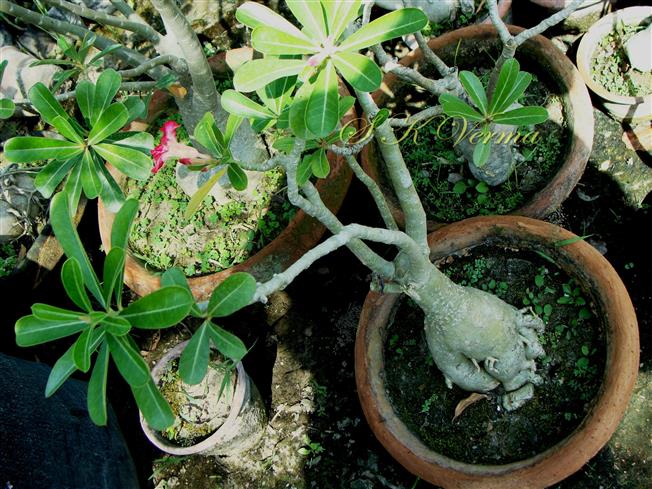
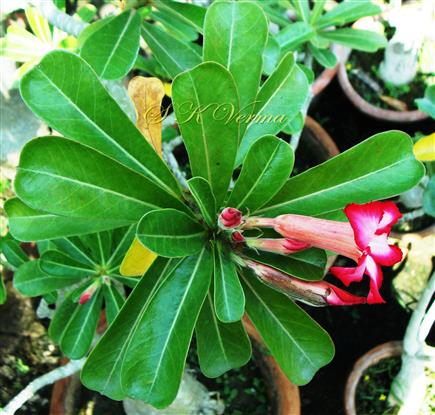
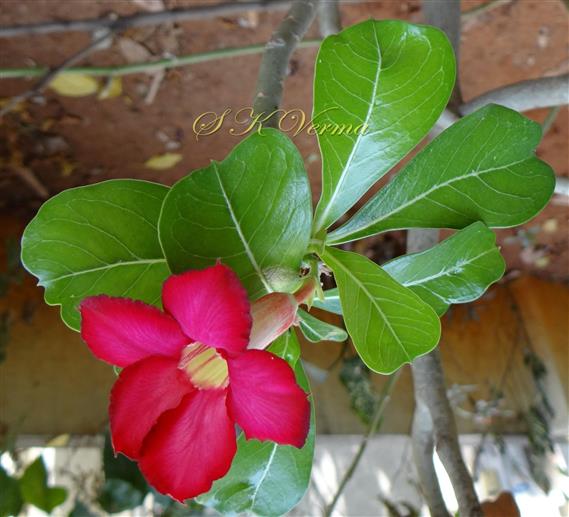
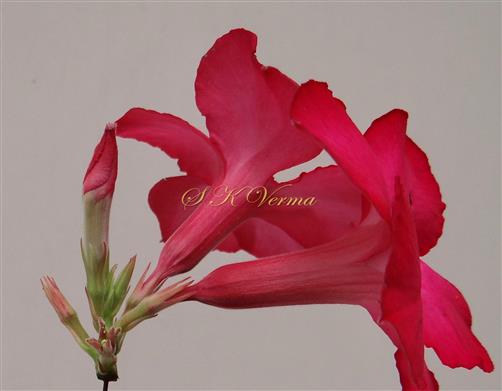
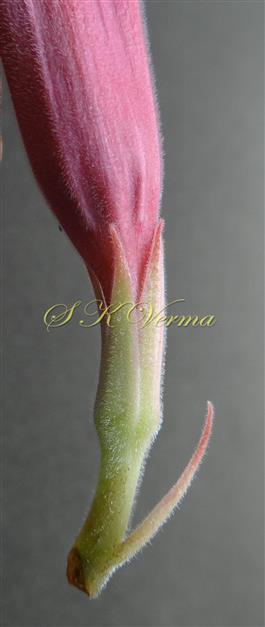

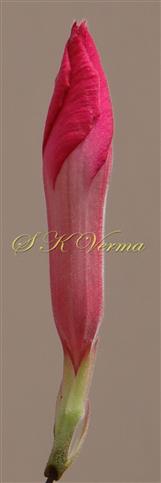
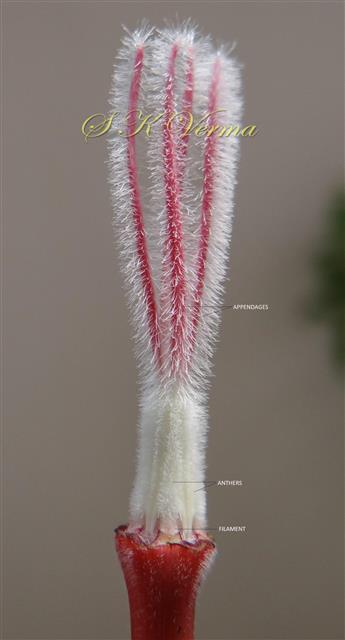
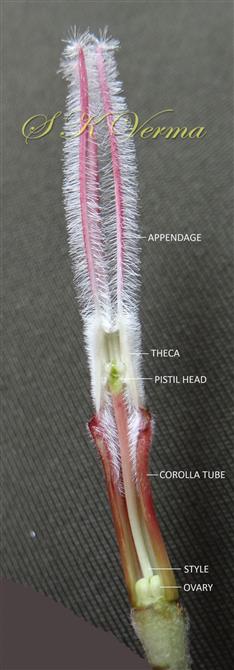
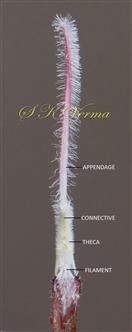
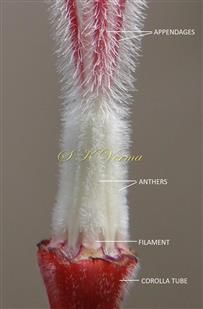
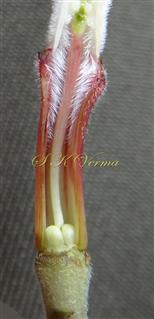
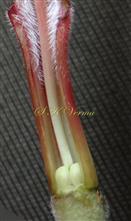
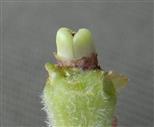

-DSC09939.jpg)
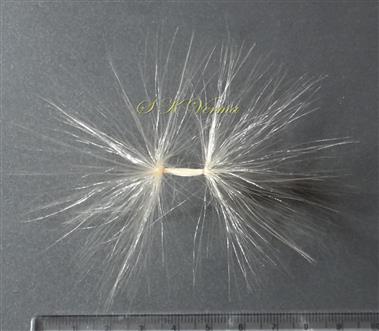















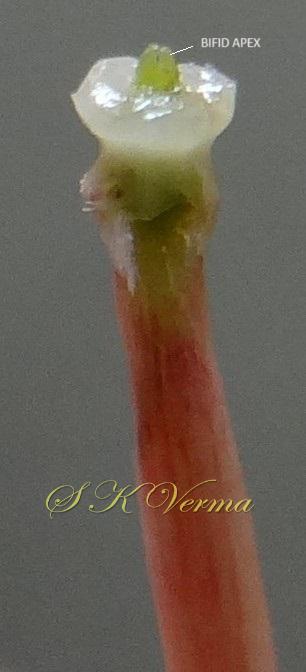
-DSC09939.jpg)
